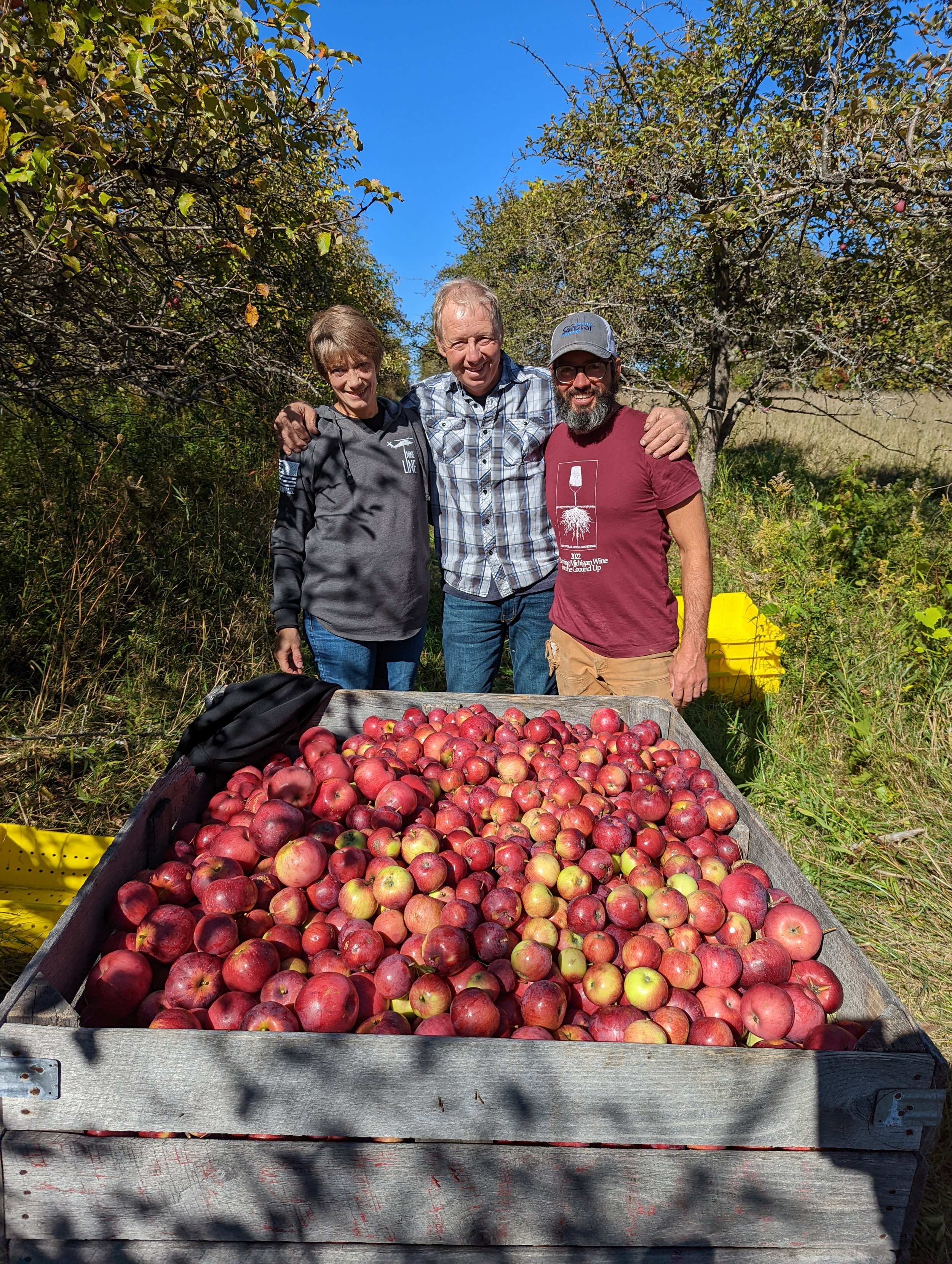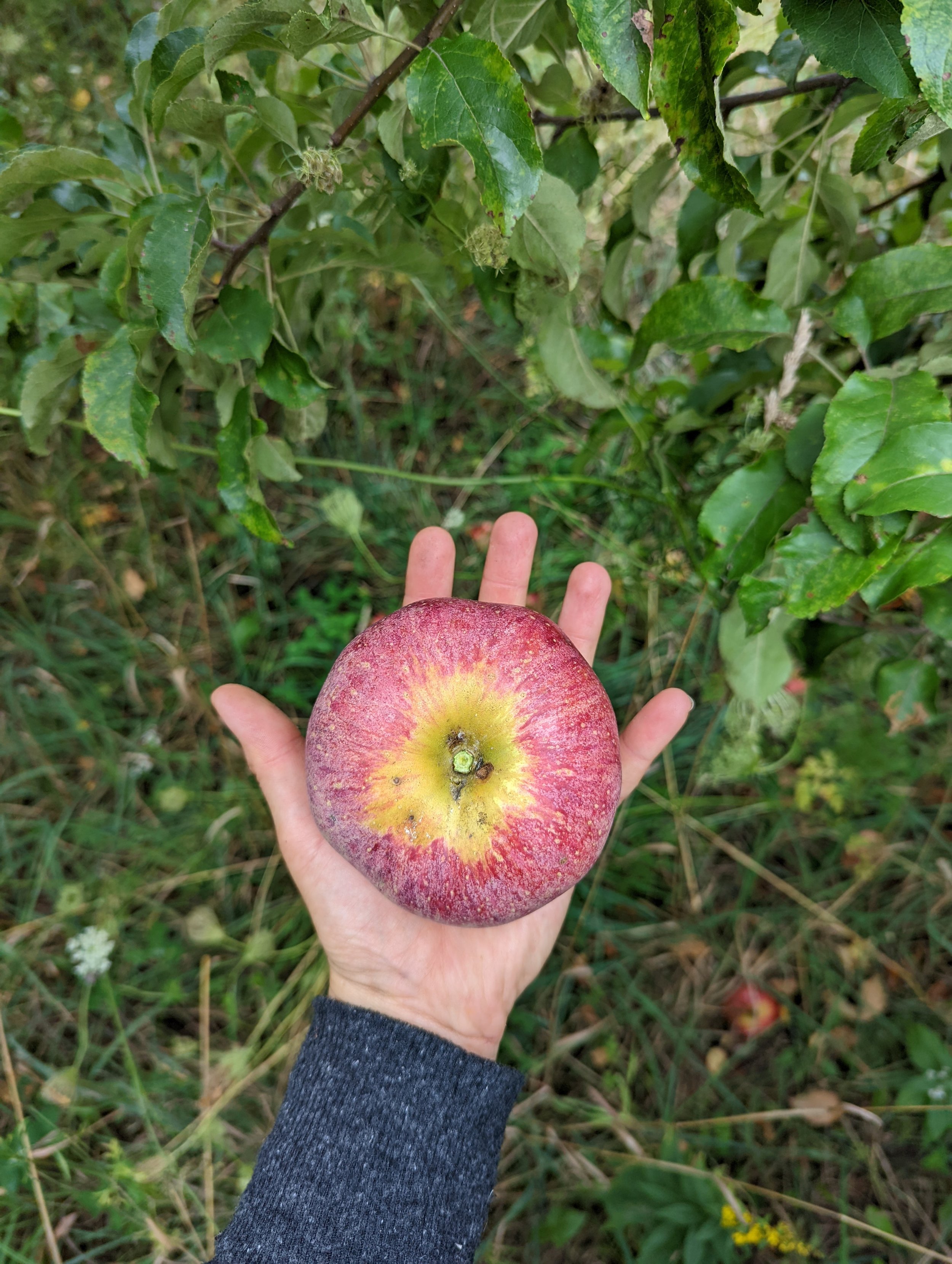Harvest 2022 Photo Diary
Let’s give it up for Folklor volunteers who helped us harvest nearly 20,000 pounds of apples at the home farm this fall. To put that in context, in 2021 we picked 4,000 pounds. When we say we couldn’t do it without you we are not exaggerating.
More than 50 of you joined us in the orchard to harvest apples over the course of 9 weeks. Whether you joined us in person, sent us notes of encouragement or read our updates – we are so grateful for the community around us.
We hope you enjoy this harvest photo diary and some end-of-season reflections.
We kicked off harvest over Labor Day weekend with the Somerset of Maine, an early-season ripening apple with pink flesh. We think there are 16 varieties of apples and the opportunity to taste them throughout the season really helped us appreciate when different varieties are ripe and ready. While the Somersets were juicy and starting to drop from the trees at the end of August, it took into late October and early November for varieties like the Jonathans and Rhode Island Greening to taste sweet and ripe.
We also had help identifying some of the apple varieties growing in the orchard including Cortland, Jonathans, Mutsu and Rhode Island Greenings. It’s remarkable how delicious and distinct the different apple varieties are with unique flavor profiles, acid and tannin.
We’re learning that we’re pretty partial to some of these old-school varieties and would encourage you to try them if you come across them at a farmer’s market or orchard. Iza’s favorite snacking apples of the season where the Golden Delicious and Derrick’s are an unidentified variety we’ve been calling “Vanilla Boys” for their distinctly rich texture and vanilla flavor. The Wolf River has been our favorite pie apple with a richness and full flavor.
Our second year picking apples confirmed what we learned last year - apple trees are physically a lot harder (and a lot taller!) to pick than grape vines! They are also so incredibly resilient. After almost a decade of not being pruned or managed, they continue to produce heaps of delicious, healthy fruit. And while the trees are producing bi-annually and there are definitely some blemishes and pest damage, because we’re grinding them up into cider, we’re not too worried about the cosmetic issues.
Going forward, our goal is to continue pruning them so they have good airflow and light penetrating into the canopy, and messing as little as possible with the ecosystem that has developed in the orchard.



















